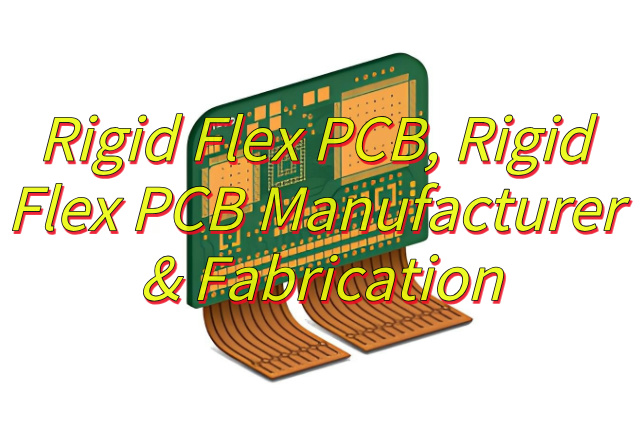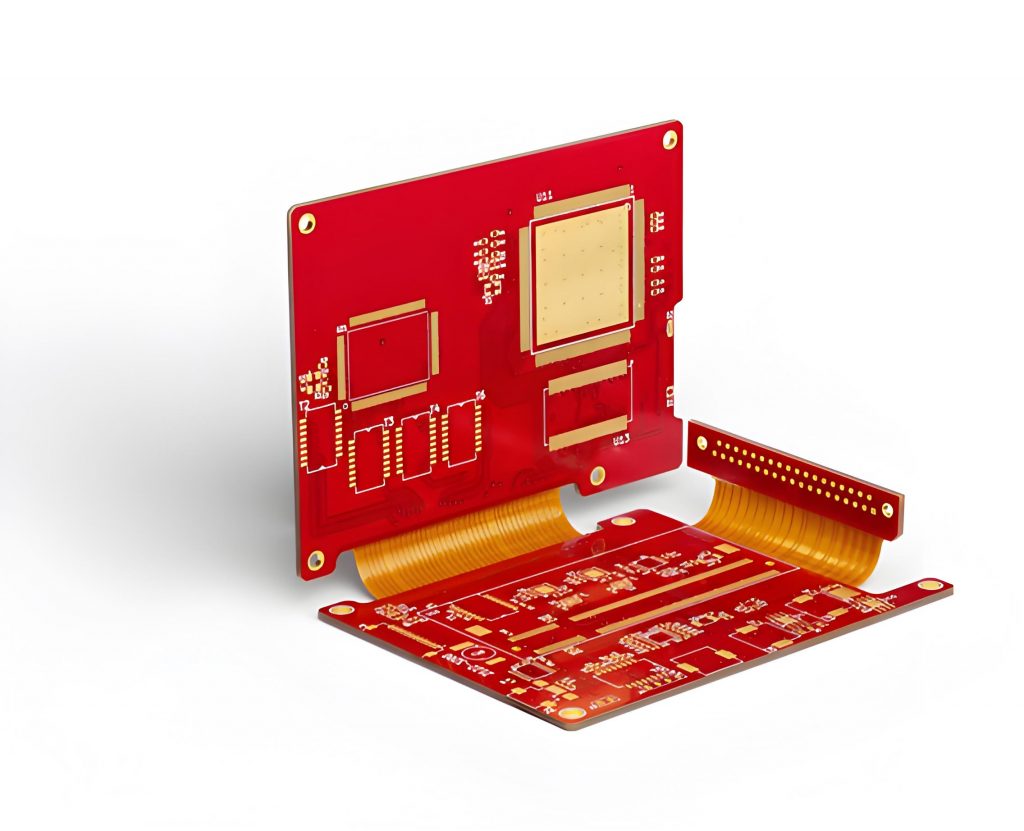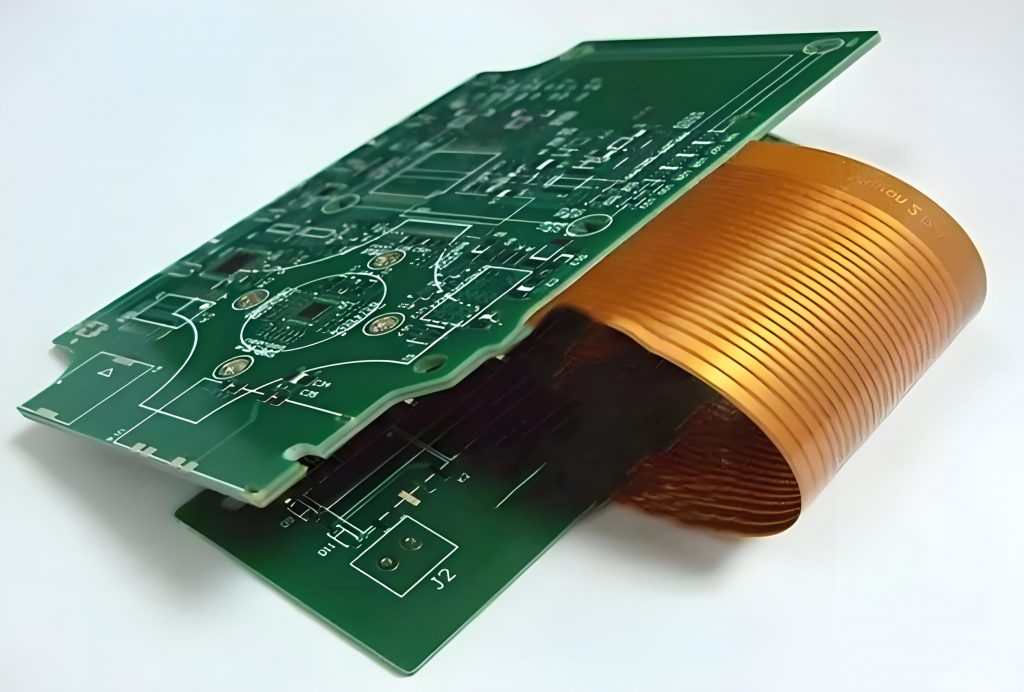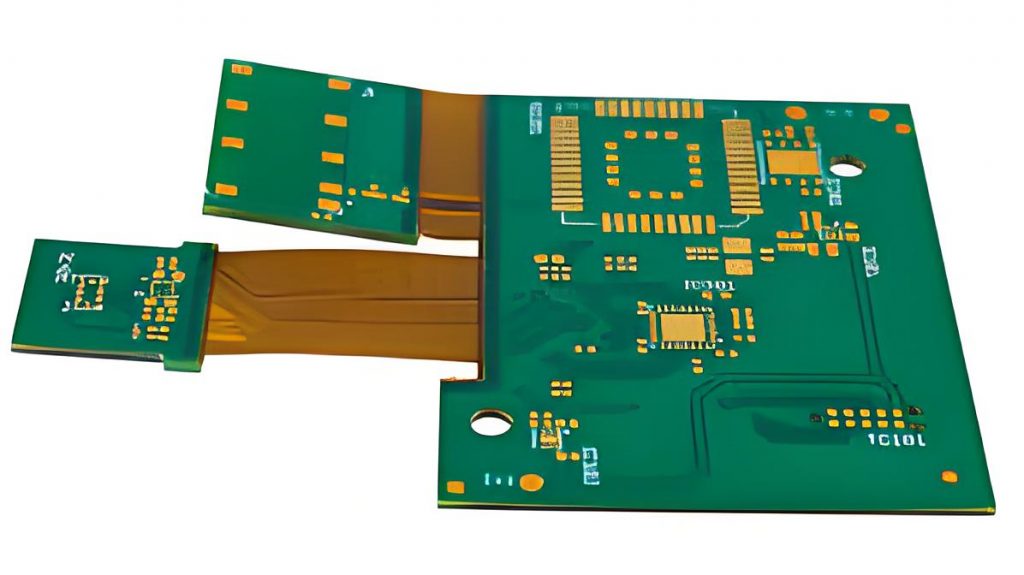Looking for rigid flex PCB solutions? Explore its definition, material, stack-up, benefits, disadvantages, cost reduction solution, manufacturer selection tips.
Best Technology is the leading rigid flex PCB manufacturer that delivers exceptional speed, quality, and transparency. With our industry-leading â24-hour rapid prototypingâ, we ensure your projects move forward without delay. Our advanced manufacturing processes guarantee high-performance PCBs with precision and reliability, while our âtransparent pricingâ means no hidden costsâjust fair, competitive rates. Whether you need a âsingle prototype or mass productionâ, we support â1-piece minimum ordersâ, making us the ideal partner for startups and enterprises alike. Fast turnaround, cutting-edge technology, and honest pricingâtrust Best Technology to power your innovations efficiently and affordably.
What Is Rigid Flex PCB?
Rigid flex PCB merges rigid and flexible regions into a single board, allowing dynamic bending in specific areas while providing stable support for components. Unlike traditional rigid PCBs, which lack flexibility, or pure flexible PCBs, which may lack structural integrity, Rigid Flex PCB achieves a balance through layer-by-layer integration. This design is particularly valuable in applications where space is constrained or dynamic movement is required, such as wearable devices and automotive electronics. The technology relies on advanced materials and manufacturing processes to ensure both mechanical durability and electrical performance.

What Is Material of Rigid Flex PCB?
Hereâs material of rigid flex PCB:
Flexible Substrates:
- Polyimide (PI): A high-temperature-resistant material with excellent flexibility and dimensional stability, ideal for dynamic bending applications.
- FCCL (Flexible Copper Clad Laminate): Composed of PI or polyester film bonded to copper foil, FCCL forms the base of flexible layers. Options include adhesive-based FCCL (cost-effective but thicker) and adhesive-less FCCL (thinner and more flexible) .
- Polyamide: A cost-effective alternative to PI, suitable for low-flex applications.
Rigid Substrates:
- FR-4: The most common rigid material, offering good mechanical strength and thermal stability.
- High-Performance Materials: For advanced applications, materials like Rogers RT/duroid or ceramic-reinforced composites are used to meet high-frequency or extreme-temperature requirements.
Copper Foil:
- Electrolytic Copper (ED): Cost-effective but less flexible, suitable for static or low-flex regions.
- Rolled Annealed (RA) Copper: Exhibits superior ductility, making it ideal for high-flexibility areas .
Adhesives:
- Epoxy Resins: Used to bond rigid and flexible layers, ensuring strong adhesion and thermal resistance.
- Acrylic-Based Adhesives: Offer transparency and flexibility, suitable for display modules.
Cover Lays:
- PI Cover Lays: Protect flexible circuits from environmental factors while maintaining flexibility.
- FR-4 Cover Lays: Provide added rigidity in hybrid regions.
Solder Masks:
- Liquid Photoimageable (LPI) soldermasks are applied to both rigid and flexible areas to prevent oxidation and ensure solderability.
Stiffeners:
- Rigid materials like FR-4 or metal plates are added to reinforce areas where components are mounted, enhancing mechanical stability.

What Is Stack-up of PCB Rigid Flex?
Rigid-Flex PCB Stack-up (Layer-by-Layer Structure)
Rigid Section (e.g., FR-4 Core)
- Layer 1: Copper traces (signal/power)
- Layer 2: Solder mask (protective coating)
- Layer 3: Rigid substrate (FR-4, prepreg)
- Layer 4: Adhesive/bonding layer (prepreg)
- Layer 5: Copper ground/power plane
Flexible Section (e.g., Polyimide)
- Layer 6: Copper traces (flexible circuitry)
- Layer 7: Coverlay (protective polyimide film)
- Layer 8: Flexible substrate (polyimide, adhesive-less for thinness)
- Layer 9: Adhesive layer (bonding to rigid section)
Transition Zone (Rigid-to-Flex)
- Staggered or stacked vias connect rigid and flex layers.
- Copper thickness reduced in flex zone (e.g., 1/2 oz vs. 1 oz in rigid zones).
Multi-Layer Variants
- Example: 6-layer rigid-flex (4 rigid + 2 flex):
- Rigid layers: FR-4 with 1 oz copper.
- Flex layers: Adhesive-less polyimide with 0.5 oz copper.
- Prepreg bonding between rigid/flex zones.
What Are Advantages of Rigid-Flex PCB?
Rigid Flex PCB offers numerous benefits over traditional PCB designs:
- Space Optimization: The ability to bend allows circuits to fit into irregular spaces, reducing overall device size.
- Enhanced Reliability: Fewer connectors and solder joints minimize failure points, improving long-term durability .
- Weight Reduction: Eliminating bulky connectors and harnesses leads to lighter assemblies, critical for aerospace and portable electronics.
- Improved Thermal Management: Rigid layers provide better heat dissipation, while flexible layers prevent thermal stress in dynamic areas.
- Design Flexibility: Complex 3D layouts are possible, enabling innovative product designs.
- Cost-Effectiveness in Volume: While initial costs are higher, mass production reduces per-unit expenses due to simplified assembly.
- High Performance: Supports high-frequency signals and dense routing, meeting demands of advanced electronics.
What Are Disadvantages of Rigid Flex PCB?
Despite its advantages, Rigid Flex PCB has limitations:
- Higher Initial Costs: Material and manufacturing complexity drive up prototype and low-volume production costs.
- Design Complexity: Requires specialized expertise to balance rigidity, flexibility, and thermal expansion.
- Manufacturing Challenges: Precise alignment and lamination processes are critical, increasing the risk of defects.
- Limited Flexibility Cycles: Repeated bending can degrade performance over time, especially in high-stress applications.
- Thermal Expansion Mismatch: Differences in CTE (Coefficient of Thermal Expansion) between rigid and flexible layers may cause delamination.
- Testing Difficulty: Inspecting and repairing hybrid boards is more challenging than standard PCBs.
- Environmental Sensitivity: Flexible materials may degrade in harsh conditions (e.g., extreme temperatures or humidity).
How to Design Rigid-flex PCB to Reduce Production Cost?
Designing for cost efficiency in Rigid Flex PCB involves balancing performance requirements with manufacturing feasibility. Here are practical strategies to minimize production costs:
- Simplify Layer Stack-Up: Use the minimum number of layers necessary for your design. A 4-layer configuration (2 rigid + 2 flex) is often sufficient for most applications, avoiding the premium costs of multi-layer boards unless advanced routing is essential.
- Standardize Material Selection: Choose widely available materials like FR-4 for rigid sections and PI for flex layers to leverage economies of scale. Reserve high-performance materials for specific critical regions rather than the entire board.
- Optimize Flex Zone Size: Limit flexible regions to areas where bending is absolutely necessary. Use rigid sections for component-heavy zones to reduce the amount of expensive flex material and processing.
- Choose Cost-Effective Copper Foil: Use electrolytic copper (ED) for rigid and low-flex areas, and reserve rolled annealed (RA) copper for high-flex zones only, where its superior ductility is truly needed.
- Simplify Via Design: Prioritize through-hole vias in rigid sections, as they are cheaper than microvias or blind vias. Minimize vias in flex layers to reduce the need for complex coverlay processing.
- Maximize Panel Utilization: Work with manufacturers to design boards that fit efficiently on standard panels, reducing material waste. Symmetrical or modular designs are ideal for maximizing the number of boards per panel.
- Relax Non-Critical Tolerances: Specify achievable bend radii (typically 3-5 times the flex layer thickness) and allow looser dimensional tolerances where possible to avoid costly precision manufacturing adjustments.
- Leverage Adhesive-Based FCCL for Prototyping: Use cost-effective adhesive-based flexible copper clad laminates for initial prototypes to validate designs before committing to more expensive adhesive-less materials.
- Integrate Passive Components: Embed resistors, capacitors, or inductors into the PCB layers to reduce the number of surface-mount components, lowering assembly costs and simplifying the manufacturing process.
- Collaborate Early with Manufacturers: Engage manufacturers in the design phase for DFM (Design for Manufacturability) feedback. They can suggest cost-effective alternatives, such as standardizing hole sizes or avoiding complex surface finishes.

How to Choose A Trusted Rigid Flex PCB Manufacturer?
Below are methods about how to choose a trusted rigid flex PCB manufacturer:
- Technical Expertise: Look for manufacturers with a proven track record in Rigid Flex PCB fabrication, including experience with complex stack-ups, materials like PI and FR-4, and advanced processes such as laser drilling and automated lamination.
- Certifications and Compliance: Ensure the manufacturer adheres to industry standards like IPC-6012 (rigid PCBs), IPC-6013 (flexible PCBs), and ISO 9001 for quality management, demonstrating a commitment to consistency and reliability.
- Advanced Equipment: State-of-the-art facilities with equipment like CNC drilling, automated optical inspection (AOI), and vacuum lamination machines are essential for precise fabrication, especially for intricate flex zones.
- Prototyping Capabilities: A manufacturer offering rapid prototyping services allows you to test designs quickly and cost-effectively, identifying and resolving issues before full-scale production.
- Quality Control Processes: Robust testing procedures, including bend cycle testing, thermal shock testing, and impedance control verification, ensure that the final product meets performance and reliability standards.
- Supply Chain Stability: Choose manufacturers with strong relationships with material suppliers to minimize delays and cost fluctuations, particularly for specialized components like high-temperature adhesives or premium copper foils.
- Transparent Communication: A responsive team that provides clear updates on production timelines, cost breakdowns, and design feedback is essential for a smooth collaboration and successful project execution.

How Much Does Rigid Flex PCB Cost?
The cost of Rigid Flex PCB varies based on factors such as layer count, material selection, design complexity, and production volume. Hereâs a general cost overview in USD for small to medium batches:
- 4-Layer Rigid Flex PCB: $10 to $30 per board, suitable for basic designs with moderate flex requirements.
- 6-Layer Rigid Flex PCB: $20 to $60 per board, ideal for mid-level complexity with dual-sided routing and multiple flex zones.
- 8-Layer Rigid Flex PCB: $40 to $120 per board, designed for high-density interconnects and advanced functionalities like embedded components.
To reduce costs effectively:
- Increase Order Volume: Larger batches lower per-unit costs by spreading setup and tooling expenses across more boards.
- Simplify Design: Reduce the number of flex zones, use standard materials, and avoid unnecessary features like exotic surface finishes.
- Optimize Panelization: Maximize the number of boards per panel to minimize material waste and improve production efficiency.
- Negotiate with Suppliers: Long-term partnerships with manufacturers can lead to discounted pricing, especially for repeat orders or large-scale projects.
Conclusion
Rigid Flex PCB represents a leap forward in PCB technology, offering unmatched flexibility and reliability for modern electronic devices. By understanding its core components, design strategies, and manufacturer selection criteria, engineers can harness its full potential while keeping costs in check. From material choice to layer stack-up, every decision plays a role in creating a balance between performance and affordability. For businesses seeking high-quality Rigid Flex PCBs tailored to their unique needs, Best Technology stands ready to deliver innovative solutions. With a focus on precision manufacturing, cost efficiency, and technical expertise, our team is committed to bringing your designs to life. Contact us today at sales@bestpcbs.com for a detailed quote and letâs transform your concepts into cutting-edge electronic products.





